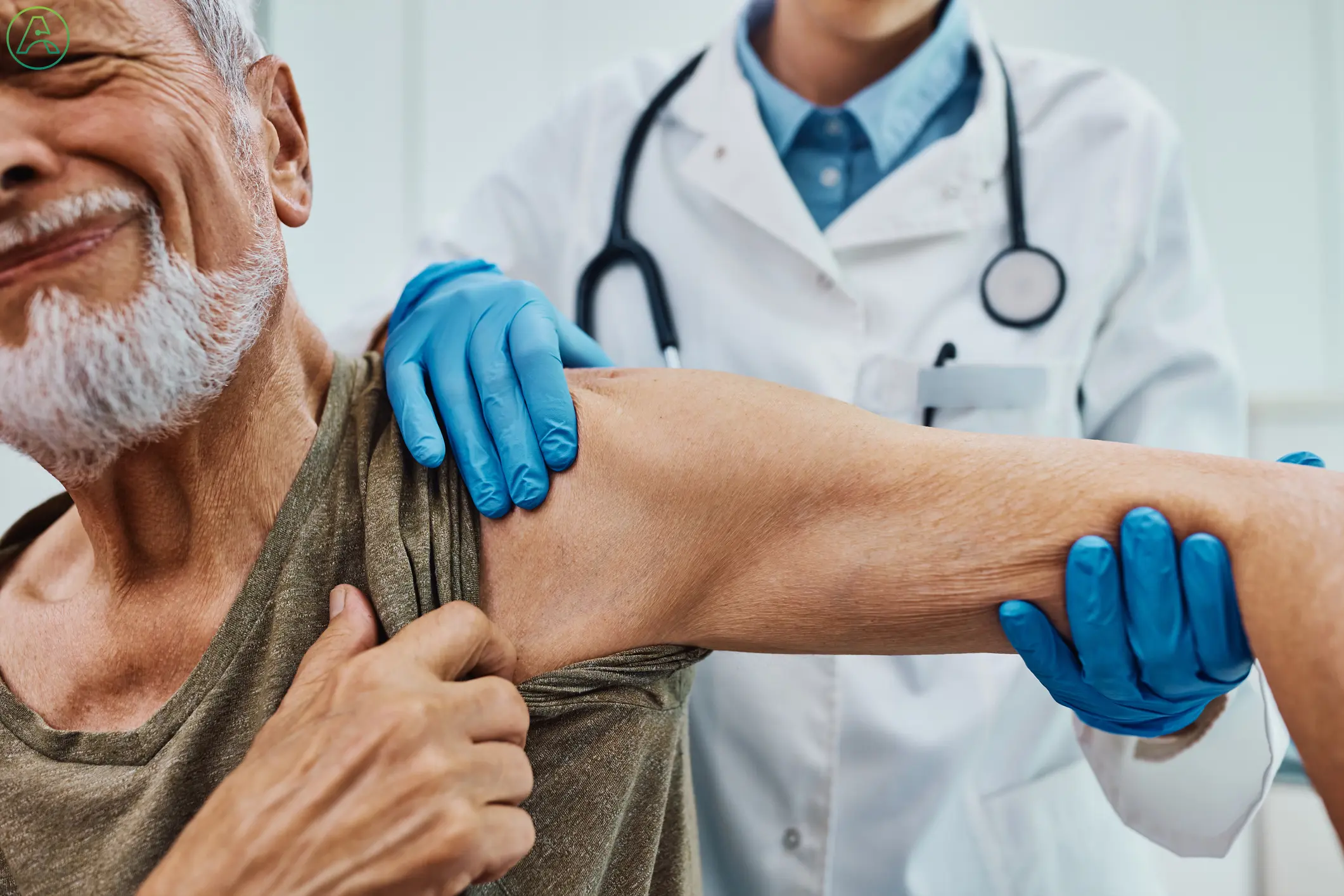According to the CDC, an estimated 53.2 million US adults have arthritis. That number is expected to continue to grow as the population gets older. In this article, Ability Central answers questions about the symptoms and early signs of arthritis, including:
What are the early symptoms of arthritis?
What is the difference between inflammatory arthritis and osteoarthritis?
What are the most common types of arthritis?
What are the symptoms of rheumatoid arthritis (RA)?
What are the symptoms of psoriatic arthritis (PsA)?
What are the early signs of gout?
When should I see a doctor about arthritis concerns?
What should I do to prepare for the doctor's appointment?
Where can I get more information about arthritis?
What are the early symptoms of arthritis?
Arthritis is a general term encompassing more than 100 conditions that affect joints, the tissue around them, and other connective tissues. The cause of the condition depends on the type of arthritis.
Generally associated with aging, injury, or infection, arthritis typically comes with chronic pain and stiffness. Early signs of arthritis vary widely, but may include:
Pain in the joints. It may be constant, or it may fluctuate. The pain may be in one joint or multiple.
Swelling of the skin over the affected joint. The skin may feel warm, inflamed, or puffy, and touching the affected area or the skin around it may cause pain.
Morning stiffness that lasts longer than an hour.
Difficulty and pain when standing up. This can include things like getting out of bed, standing up from a chair, or climbing out of a car.
What is the difference between inflammatory arthritis and osteoarthritis?
There are over 100 conditions considered to be arthritis, divided into two primary categories: inflammatory arthritis and osteoarthritis.
Inflammatory arthritis causes joint pain, swelling, warmth, and tenderness in the joints, sometimes accompanied by morning stiffness that lasts an hour or longer. This kind of arthritis occurs when the body attacks its own joints and tissues.
Osteoarthritis occurs when the protective cartilage that cushions the ends of the bones wears down over time. It commonly affects joints in the hands, knees, hips, and spine.
What are the most common types of arthritis?
Of the more than 100 diseases considered arthritis, the four most common are:
Osteoarthritis, affecting around 32.5 million adults in the US.
Rheumatoid arthritis, affecting around 1.3 million adults in the US.
Psoriatic arthritis, affecting around 2.4 million adults in the US.
Gout, affecting around 8.3 million adults in the US.
To learn more about these types of arthritis, see Understanding Arthritis: Causes, Types, and Risk Factors.
What are the early signs of rheumatoid arthritis (RA)?
Rheumatoid arthritis (RA) symptoms often develop slowly, and the earliest signs of RA may seem unusual for an arthritic condition. Nonspecific systemic symptoms like fatigue, malaise, and depression can be early indicators of RA, lasting weeks or months before RA is officially diagnosed.
Typical early rheumatoid arthritis symptoms involve:
Stiffness in the joints. RA can affect any number of joints but tends to irritate five or more.
Pain and tenderness in the joints and the areas around them.
Inflammation or swelling around affected areas.
Morning stiffness lasting several hours.
Stiffness after long periods of inactivity.
Rheumatoid arthritis symptoms can worsen drastically in a “flare,” a period lasting anywhere from a few hours to a few weeks. In the worst cases, an RA flare can last years without proper medical treatment.
During an RA flare, pain, swelling, and stiffness can be severe, but one of the most impactful symptoms of a rheumatoid arthritis flare is debilitating fatigue. Sometimes this is accompanied by a low-grade fever of approximately 99°-100° F (37°-38° C).
What are the symptoms of psoriatic arthritis (PsA)?
Psoriatic arthritis (PsA) is a chronic, inflammatory disease of the joints and entheses, where tendons and ligaments connect to bone. While some people develop PsA after an injury, it may also be genetic.
The National Psoriasis Foundation describes the early symptoms of PsA as:
Fatigue
Tenderness, pain, and swelling over tendons
Swollen fingers and toes
Stiffness, pain, throbbing, swelling, and tenderness in one or more joints
Reduced range of motion
Morning stiffness and tiredness
Nails pitting or separating from the nail bed
Redness and pain in the eye (uveitis)
What are the early signs of gout?
Gout is a type of inflammatory arthritis that most commonly affects the feet. Intense joint pain, caused by a buildup of uric acid, comes with inflammation, redness, and stiffness in the area. These symptoms are typically strongest in the big toe.
Most gout attacks last for 3 to 10 days, although some can last much longer without proper medical attention. Untreated gout can move on to affect other joints in the body, as well as the kidneys.
When should I see a doctor about arthritis concerns?
The Arthritis Foundation suggests that you watch for the consistency in symptoms before making an appointment. Make an appointment if the symptoms have lasted three or more days or if multiple episodes of joint symptoms occur within a month.
The Arthritis Society of Canada offers a symptom checker tool to help categorize your symptoms and better communicate your concerns with your doctor.
What should I do to prepare for the doctor's appointment?
Before visiting your primary care physician (PCP), keep track of your symptoms for a few weeks. Ask yourself questions like:
Which joints are swollen and stiff, when, and for how long?
What helps ease the symptoms?
Are there any other symptoms, such as fatigue or a rash?
Have you had a low-grade fever?
While waiting for the appointment, begin researching What To Do First After an Arthritis Diagnosis so you can plan accordingly. Simple first steps include:
Understanding the tests your doctor might request.
Having reliable means of communication when needs arise.
Understanding your long-term needs. See Arthritis: Know Your Long-term Care Options for more details.
Where can I get more information about arthritis?
To learn more about arthritis in adults, see:



